Nikos Kazantzakis Museum
The Nikos Kazantzakis Museum pays tribute to the important intellectual, author, thinker, philosopher, politician and traveller Nikos Kazantzakis. The Museum is made up of a cluster of buildings in the central square of the historical village of Varvari, now known as Myrtia. The Museum Exhibition is housed on a site formerly occupied by the home of the Anemoyiannis family, which was related to Nikos Kazantzakis' father, Kapetan Michalis. The Museum holds manuscripts and notes by the author; samples of his correspondence with major thinkers, politicians and authors of his time; first editions of his works in Greek and other languages; rare photographic material; souvenirs from his travels; personal effects; models, costumes and other material from theatre productions of his works in Greece and abroad; portraits and sculptures of the author; dozens of foreign-language editions of his works from all over the world, all a legacy that brings alive the memory of Nikos Kazatzakis and promotes his work and personality.
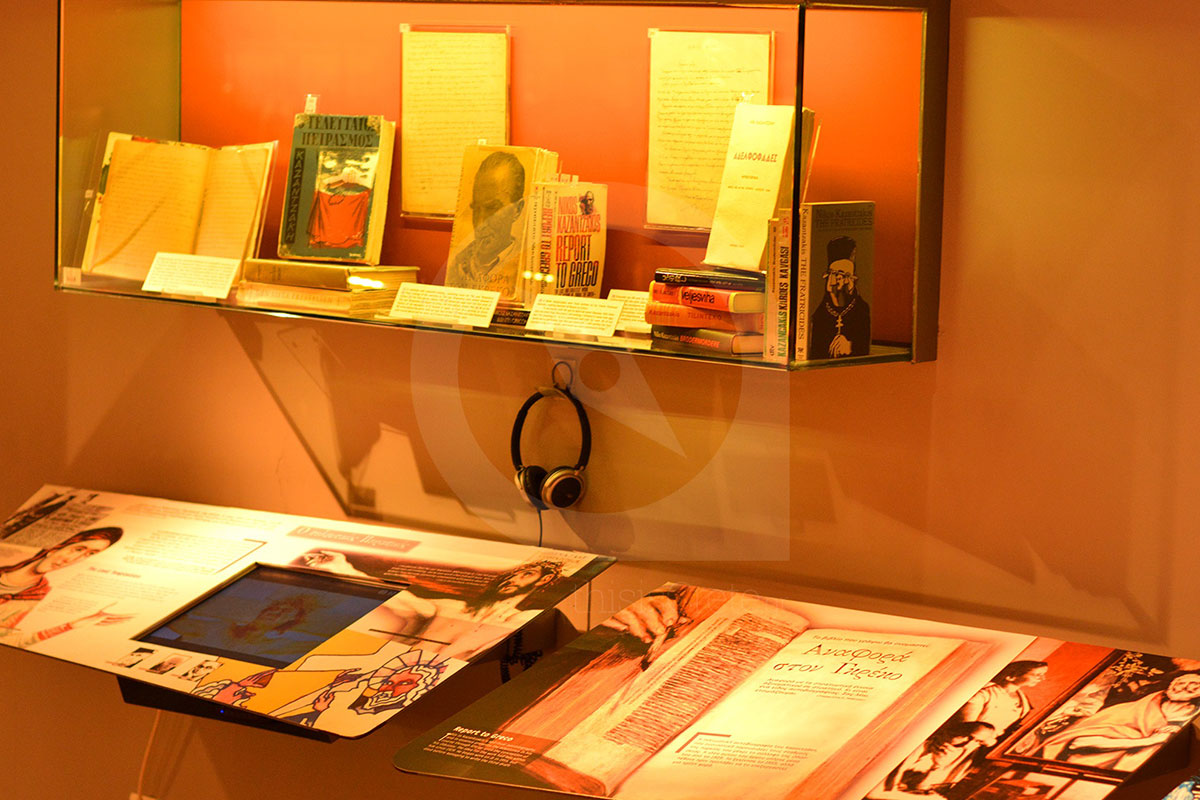
The Labyrinth Musical Workshop
The Labyrinth Musical Workshop was founded in 1982 by Ross Daly, with the goal of initiating young people, primarily, into a creative approach to traditional musical idioms from various parts of the world. Apart from the personal collection of Ross Daly himself, exhibitions of unique collections of instruments belonging to other collectors will also be on display from time to time, as well as exhibitions of the work of some of the best of contemporary instrument makers worldwide. Parallel to the exhibition of instruments, special musical seminars and "master-classes" are organized at regular intervals featuring some of the foremost master-musicians of the traditional music from all over the world.
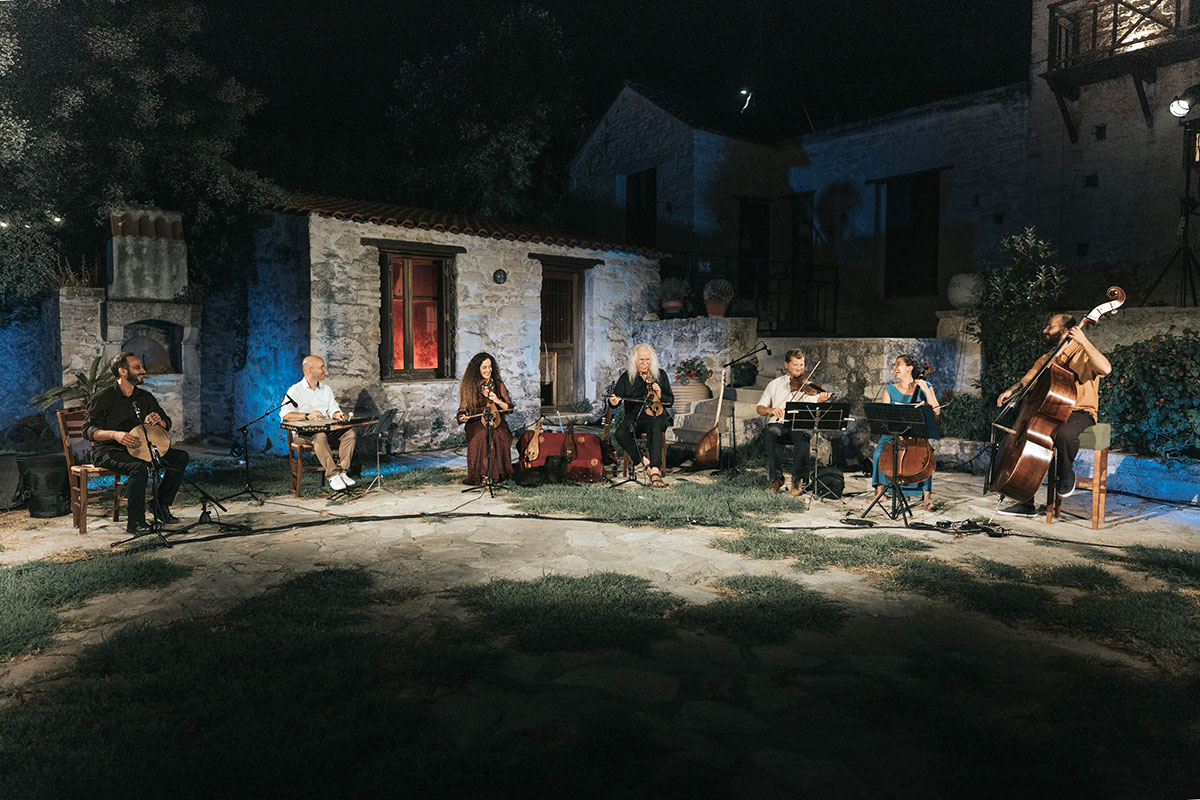
Agarathos monastery
This men's convent, dedicated to the Assumption of the Virgin, is one of the oldest monasteries in Crete. Manuscripts in the British Museum, dated 1559, provide evidence that it had an important library then. During Venetian times this monastery, as well as Agia Ekaterini in Iraklion, were educational centres and provided instruction for many important scholars. The name of the monastery comes from Agarathia, which means Jerusalem Sage because it is believed that an icon of the Panagia was found in this spot under a Jerusalem Sage bush. The church of the monastery is dedicated to the Virgin Mary. When the Turks invaded the island the icon of the Panagia and other valuables were sent by the Abbot to Kithera for protection. Many inscriptions in the monastery date from the Venetian era, although the present church is new.
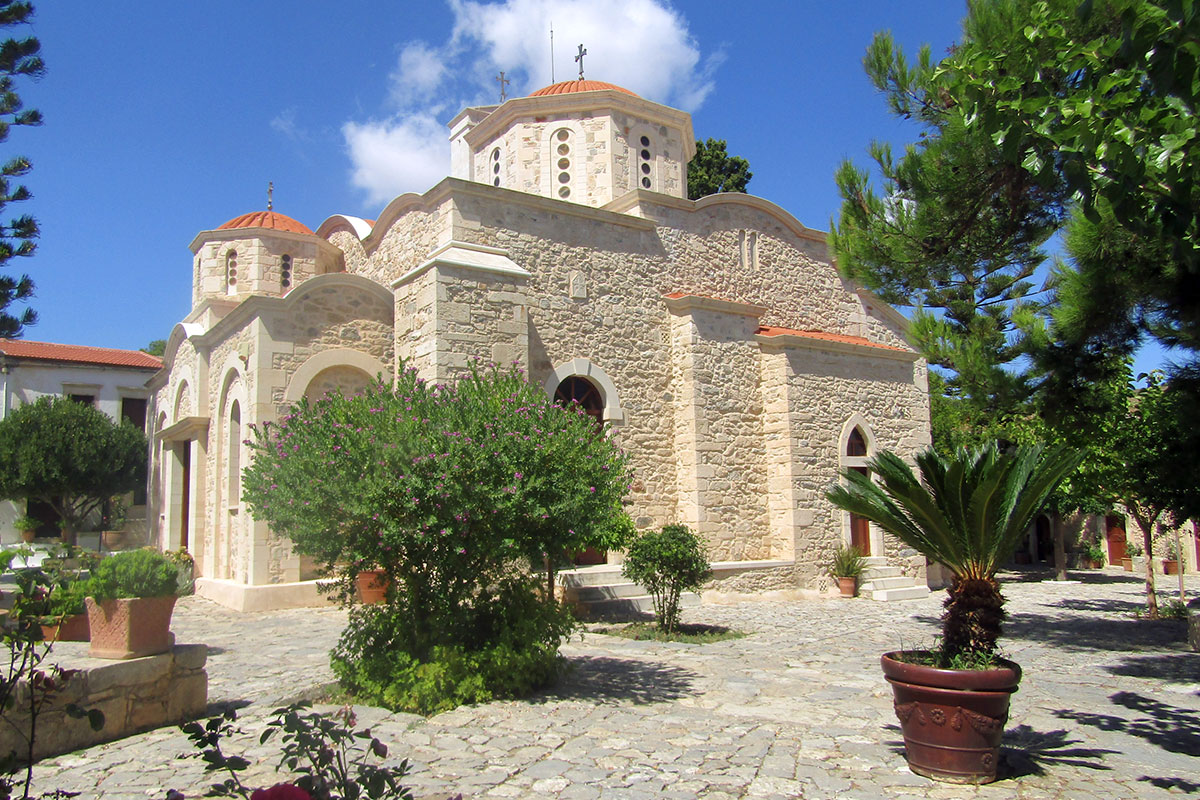
Archaeological Museum of Heraklion
The Heraklion Archaeological Museum is regarded as one of Europe's most important museums. The present building was constructed between 1933 and 1937 to plans by P. Karantinos, on the site of the imposing Venetian Franciscan friary destroyed by an earthquake in 1856. The museum brings together archaeological finds from all over Crete, covering over 5500 years of the island's history. Pride of place is given to the treasures of Minoan civilisation, the entire historical course of which can thus be appreciated. Justly regarded as the home of Minoan civilisation par excellence, the museum houses the most important collection of Minoan antiquities the world over. Since November 2006 the museum has been closed for interior renovation. A small temporary exhibition housing the museum's most important exhibits is on view in a specially designed room on the north side, off I. Chatzidaki St. Exhibits include the Snake Goddesses, the Phaistos Disk, the La Parisienne and Bull Leaping frescoes and the "Ring of Minos".
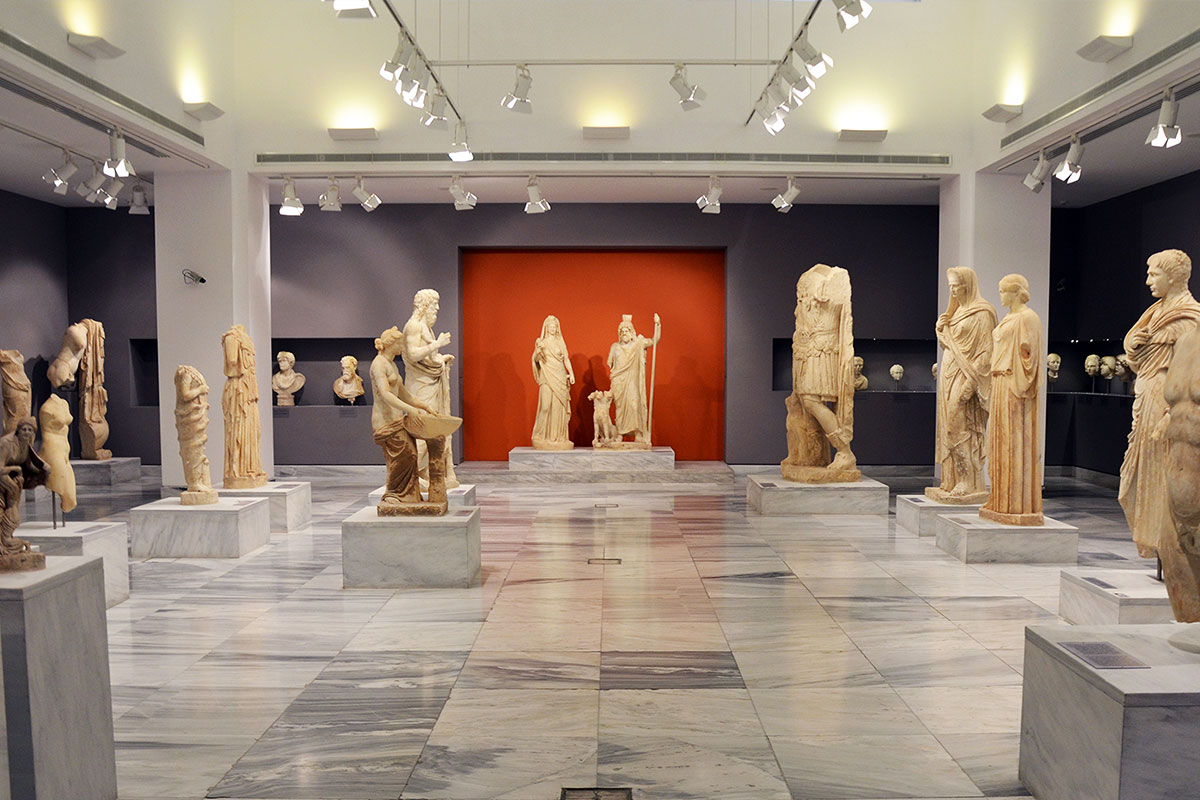
Historical Museum of Crete
The museum is housed in a neoclassical building of Kalokairinos family. The museum items are Christian, Byzantine and Venetian sculptures, jewellery, banners, weapons of various revolutions, documents, images, sacred vessels, textiles and other high-value artifacts housed in the museum. In the museum is the only tableau in Crete of El Greco and a room for Nikos Kazantzakis with personal items of the author, and Emmanuel Tsouderos Hall Room, a room for Kalokairinos, the model of the city of Candia and a ceramics room.
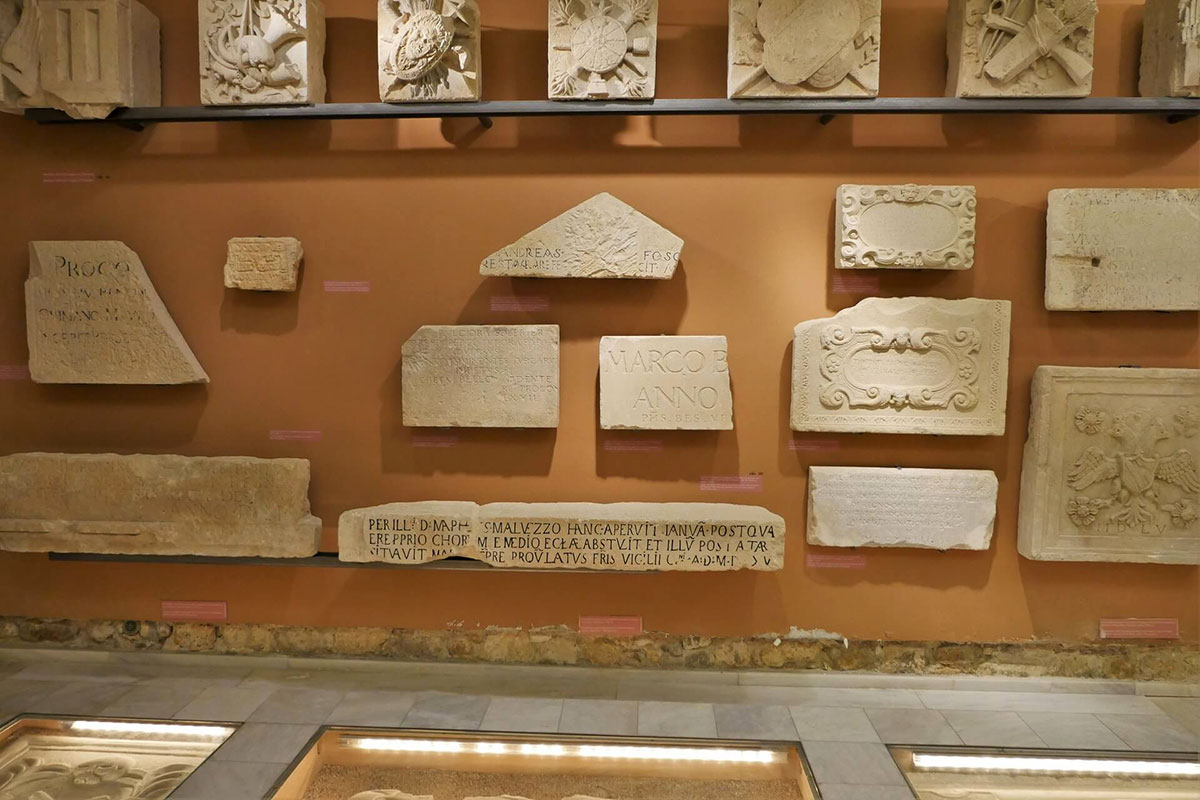
Lassithi Plateau
Oropedio Lasithiou or Lasithi Plateau is a large scenic plain, and a municipality, located in the Lasithi peripheral unit in eastern Crete, Greece. The seat of the municipality is the village Tzermiado. The Lasithi Plateau stretches (11 km (6.8 mi) in the E-W direction and 6 km (3.7 mi) in the N-S direction. It is approximately 70 km (43 mi) east from Heraklion and lies at an average altitude of 840 m (2,760 ft), which makes it one of the few permanently inhabited areas of such altitude around the Mediterranean. Winters can be very harsh and snow on the plain and surrounding mountains often persists until mid-spring. There are several caves of archaeological interest in the surrounding countryside, of which Diktaion Andron near the village of Psychro is the birthplace of Zeus according to Greek Mythology. Zeus is also said to have used Diktaion Andron as his hiding place after abducting Europa.
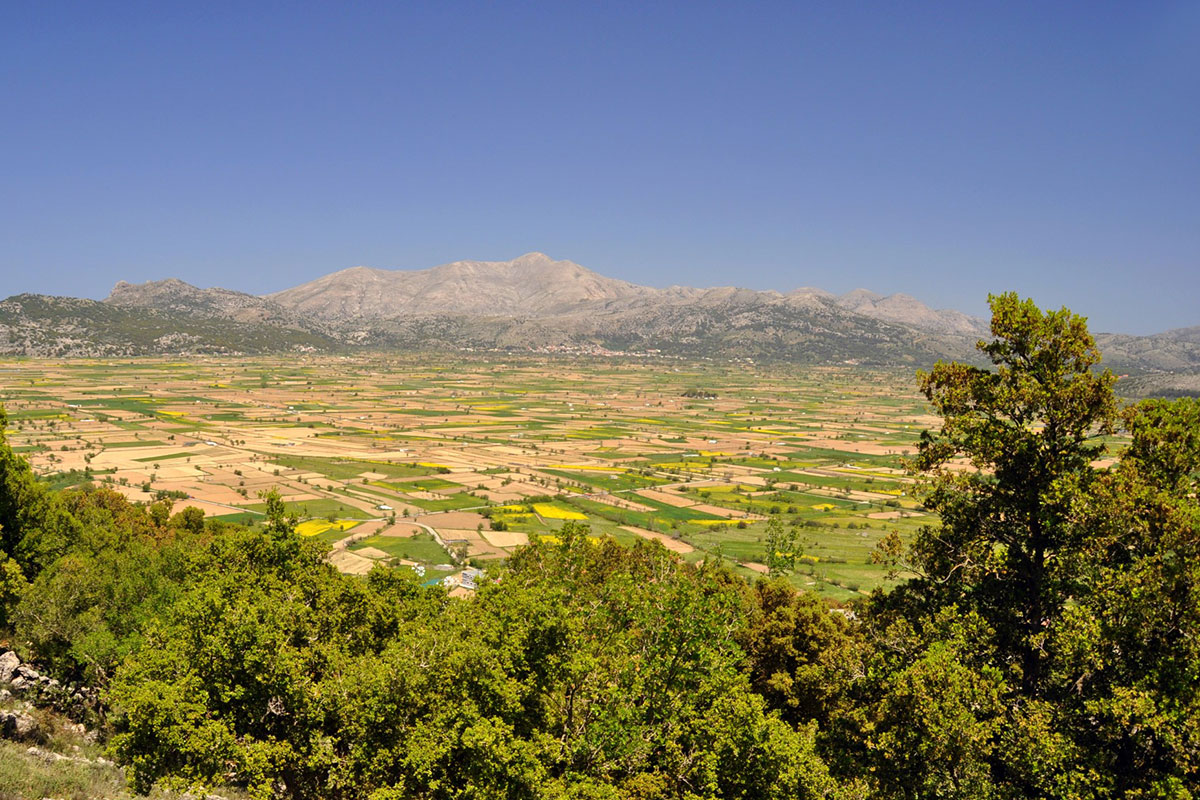
Cretan Open-air Museum of Folklore Lychnostatis
The Cretan Open-air Museum LYCHNOSTATIS aims to promote the understanding and awareness of the Cretan folk cultural heritage.
Its scope lies on the following themes:
- Cretan Folk Tradition and Ethnology (life-style in the pre-industrial Crete, traditional occupations and customs, living legends, ethnological information e.t.c.)
- Cretan Nature and Environment (vegetation, mineral wealth, environmental administrative process)
- Cretan Folk Culture (self - taught artists who promote the folk cultural heritage with their artistic work)

Natural History Museum
Operating within the wider University of Crete framework, the Natural History Museum of Crete fulfils all the roles demanded of a comprehensive, modern museum by:
- Keeping and developing collections
- Carrying out research into the natural world
- Contributing to teaching at all levels in the education system
- Promoting the unique nature of habitats in Crete and the Mediterranean.
The museum's impressive growth over the last decade reflects the competence and professionalism of its staff, as well as the growing need in society for proper information concerning the environment.

Minoan Palace of Knossos
Situated 5km SE of the city of Heraklion is the most important archaelogical site in Crete - Knossos, the most representative relic of the Minoan civilization which once flourished on the island. The palace is built on the slopes of Kefalas mountain with easy access to towards the sea and the interior of Crete.According to legend it was the seat of the wise King Minos. Enthralling legends abound in the area of the palace of Knossos relating to: the labyrinth, the minotaur, Daedalus and Icarus. According to the historical evidence the palace of Knossos was built around 1900 BC on the Kefala heights on top of a Neolithic settlement populated in 6.000BC. It encompasses an area of 22.000m2 wherein developed the most ancient city of Crete with a population reaching 80.000 people evidenced by the presence of cemeteries nearby. During the copper age there is no other building that surpasses in grandeur and luxury the palace of Knossos. The palace of 22.000m2, boasts 1.500 rooms, five storeys at some points, two extensive cobbled courtyards, theatre, sanctuaries, workshops and storage rooms with exquisite clay gigantic jars (pytharia).The palace was architecturally designed, securing coolness in summer, warmth in winter and light radiating in all the spaces. Water emanated from as far as the areas of Kounavon and Archanon, was transported via clay pipes leading to the aquaduct of the city from where the water was distributed to the houses.
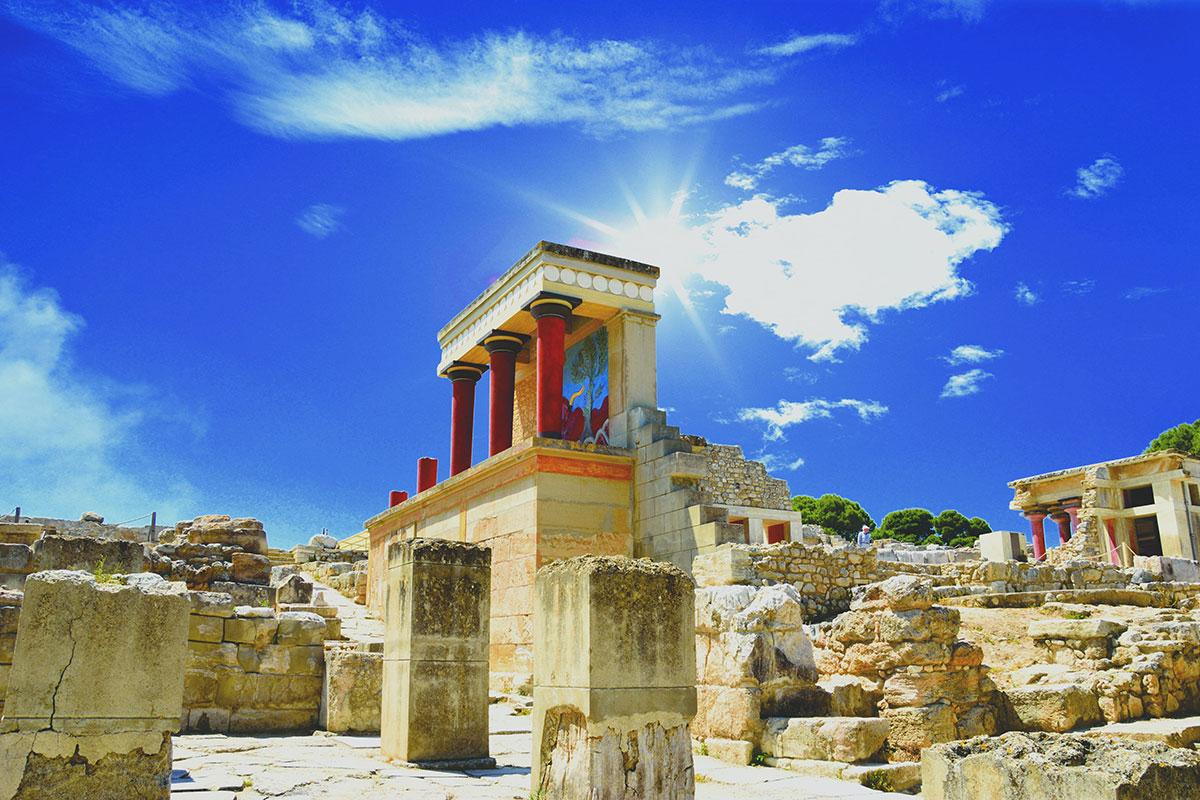
Minoan Palace of Malia
The palace found at Malia is the third largest palace of Minoan Crete after Knossos and Phaistos. It occupies 7500 square meters at the edge of a fertile valley near Hersonissos in Northern Crete. The palace's proximity to the sea was obviously important in the development of the site into a cultural hub for its ancient inhabitants. It was first built around 1900 BC, a time of feverish development for the entire island population. It subsequently followed the same cycle as the other palaces of the time, and it was destroyed by unknown reasons around 1650 before it was immediately rebuilt. The ruins at the site today reflect this second rebirth of the palace on the ruins of the old one, and the excavations which persist to our day reveal a place of significant economic and political activity which lasted until its final destruction by fire in 1450 BC. The architecture of this Neopalatial palace roughly follows the plan originally laid by the destroyed palace. A large central court yard is surrounded by storage rooms to the east, the theater and several crypts and corridors to the West, and the main entrance to the south. Along the lines with other Minoan palaces, there is a smaller courtyard to the west where modern visitors normally enter the ruins, adjacent to the eight circular granaries. An extensive complex of settlements had developed around the palace itself. A large complex dating back to the Protopalatial period (area "M" to the north-east of the palace) included workshops, storage and cult rooms. Nearby excavations of the Necropolis at Chrysolakos (meaning gold pit) yielded a wealth of important Minoan artifacts, including the famous gold bee pendant now exhibited at the Heraklion Archaeological Museum. Nearby to the north of the palace, excavations continue at area "K" which was the agora of Malia.
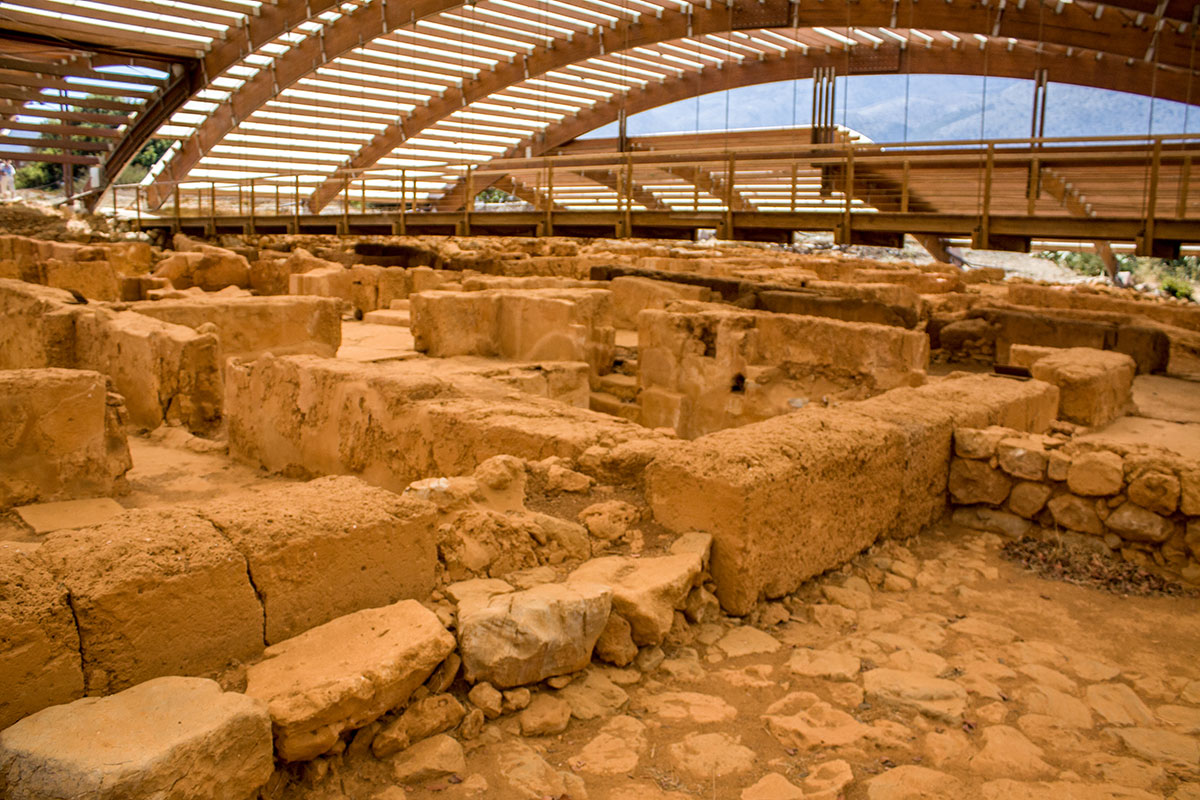
Minoan Palace of Phaistos
The palace of Phaistos commands the Messara plain from its location on a low hill, and it is the second in size palace of Crete after Knossos. The site was inhabited since the late neolithic era with several well organized settlements on the hill and the surrounding area, and the first palace was built around 2000 BC. Excavations have unearthed a rich historical strata, and some ruins date back to neolithic times.

Koules Fortress
On the western pier of Heraklion harbour is esconced a formidable Venetian fortress with the today name Koules. During Venetian rule it was known as Ricca a mare or Castello a mare, meaning fort of the seas. The name that finally prevailed is "Koules" from the Turkish name "Su kulesi"but was built by the Venetians. In the first years of Venetian rule it served to protect the harbour and city which was of great strategic importance in the region. The initial edifice was low, got destroyed by earthquake in 1303 and repaired. In the beginning of the 16th century within the framework of a general planning of the fortifications of the city the old fort was pulled down and a new one built in its place-this is what remains until today. It was built during the period 1523-1540 as per the inscription on the northern wall. In 1630 there were 18 cannons on the ground floor and running up an enclosed pathway to the roof were another 25 cannons. This pathway was specifically used for dragging the cannons up and down the roof. The north eastern, western and southern sides of the walls were decorated with marble relief pictures of the winged lion of Venice which survive until today excepting their heads. The ramparts of the fort have been restored. Most of the fire-power of the fort was concentrated on the ground floor and along the external walls there were indentations to house the cannons. Also the fort did not lack a water reservoir, a jail and various storage rooms for food and munitions. To cater for the needs of the guards and church, a mill and a bakery was provided. Naturally there were barracks for the guards and houses for the officers and Administration of the fort. The marks of longevity and wear and tear can clearly be seen on the surface of the walls. Even the structures include many amorphous and different stones betraying the successive repairs and additions carried out. Over the passing of the years,"Koules" became the trademark of heraklion. The winged lion of St. Marks stands formidably on three marble relief plaques on the fort walls dominating this exquisite monument.
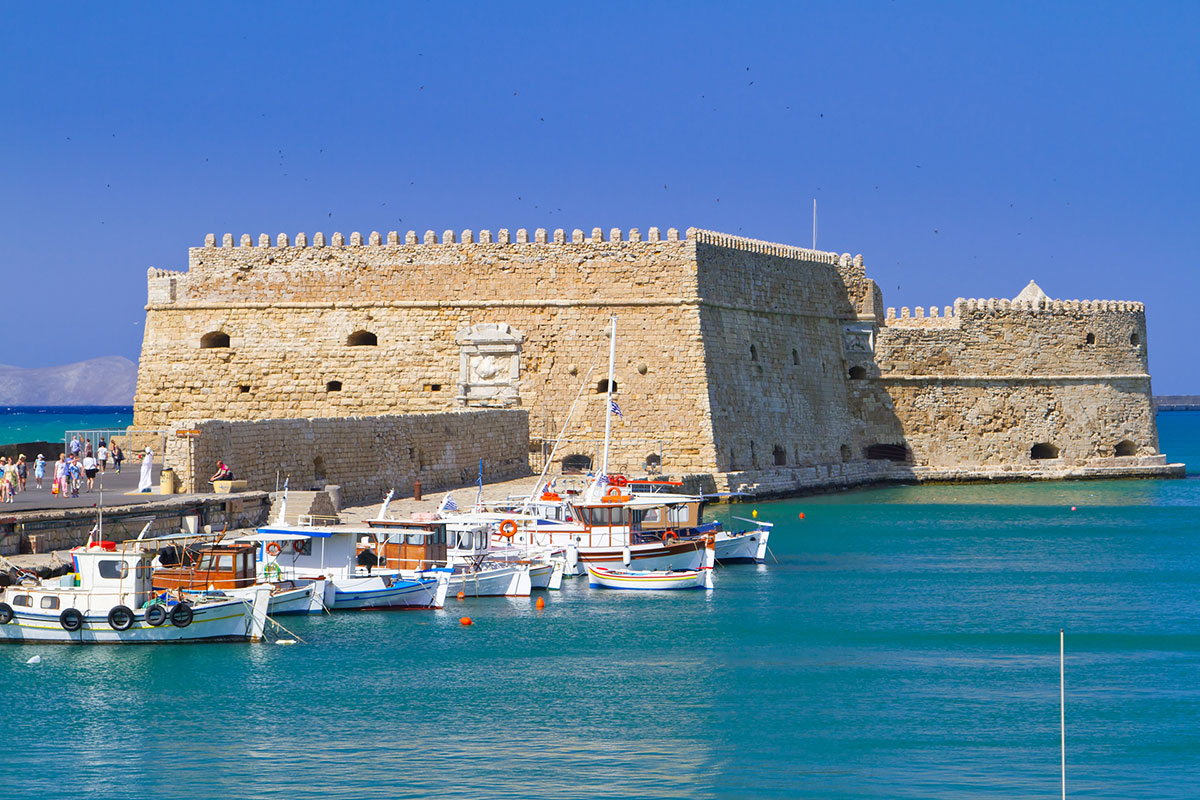
Cretaquarium
This is where your experience exploring the Mediterranean sea world begins. Come face to face with hundreds of species and thousands of living organisms. Be fascinated by their behaviour as they reveal the wide variety of shapes, colors, habits and needs of their own world. Learn about them and reflect on what our common future may be.

Crete Golf Club
The Crete Golf Club, designed by the architect Bob Hunt, is the first 18-hole golf course in Crete. The course has exceptional scenery and offers genuine challenges to golf players. The course's architects have taken under consideration the protection and conservation of the surrounding natural environment, by implementing ecological solutions such as a modern water maintenance system and large tracts of land, which remain untouched. This rugged golf course, carefully designed to blend harmoniously with the natural environment of Crete, is the most demanding in Greece and is a true challenge to golf players.
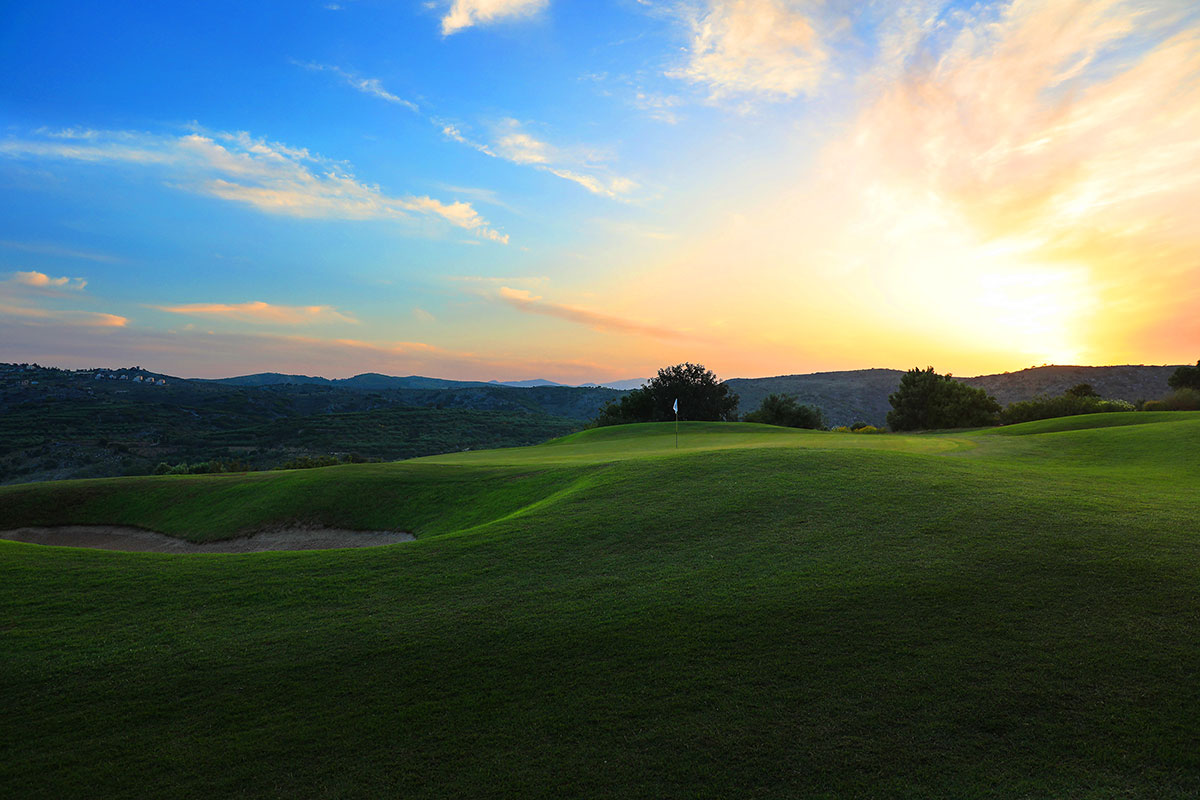
Agios Nikolaos
Agios Nikolaos, with over forty years of experience in the tourism industry, is an international and cosmopolitan resort that welcomes thousands of visitors annually. The lake is its most charming feature. Legend suggests that Athena and Armetis bathed in its waters. This lake is connected to the sea by a straight channel, while its natural surroundings of red rock and trees attract the visitor magnetically.

Spinalonga
The island of Spinalonga is located in the eastern part of Crete, near the town of Elounda. In 1579, the Venetians built a fortress on Spinalonga over the ruins of an acropolis. They kept control of the island until the Ottoman Empire took possession of it in 1715. The island is notable for being one of the last active leper colonies in Europe, being used in this manner from 1903 until 1957. The last inhabitant, a priest, left in 1962. Today, the unoccupied island is one of the main tourist attractions in Crete. In addition to the abandoned leper colony and the fortress, Spinalonga is known for its small pebble beaches. The island can easily be accessed from Elounda and Agios Nikolaos.
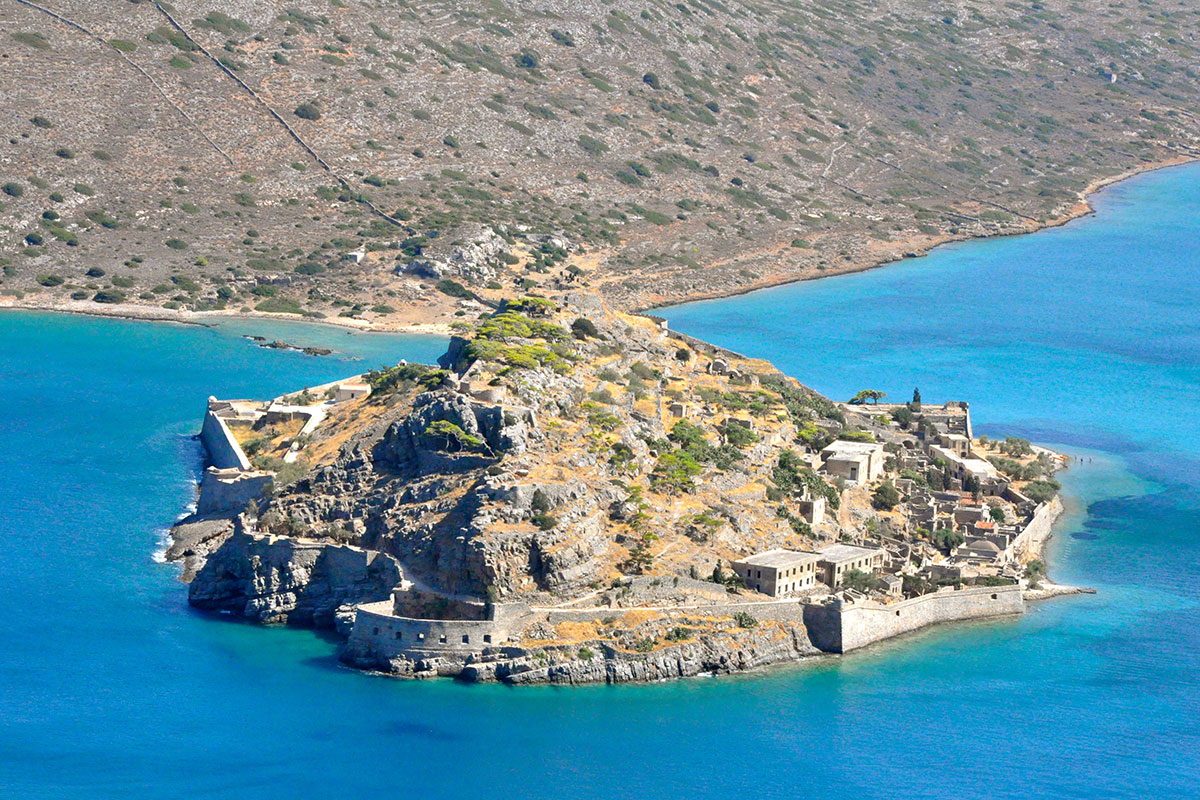
Elounda
This is a world renowned tourism resort located to the north of Aghios Nikolaos, having an indented coastline, shaded beaches, crystal clear seas, and a tranquil and heavenly environment. It is 10km distance from Aghios Nikolaos, and the cutting along the side of the road affords you the opportunity to admire the spectacular view of Mirambello Gulf and Korfos. The village is built on the southern coast of the Gulf of Elounda, 1km east of the ancient settlement of Olounda, from which it has taken its name. This used to be the favored place of legendary figures from Minoan Crete and of historical figures of our times.
